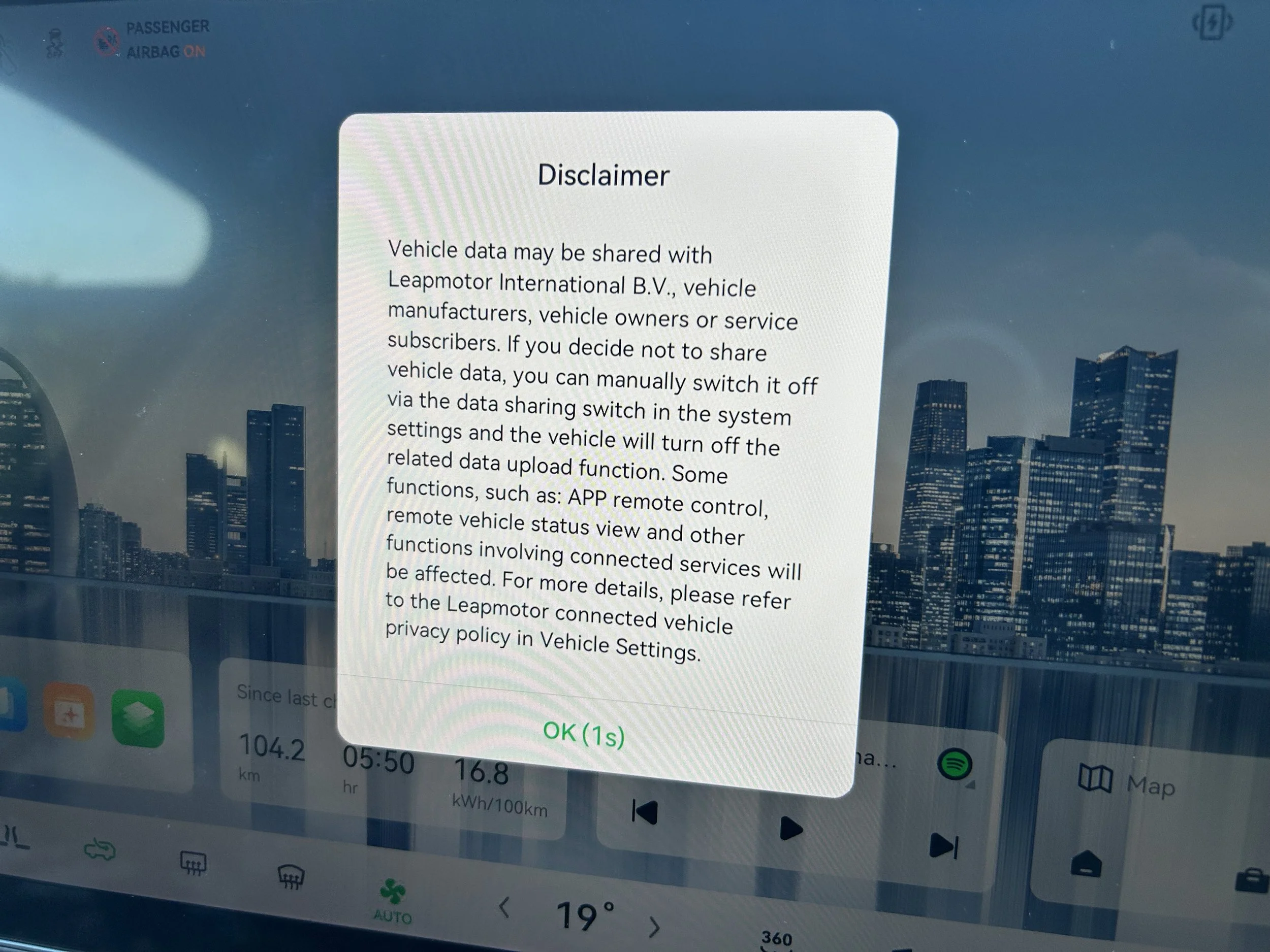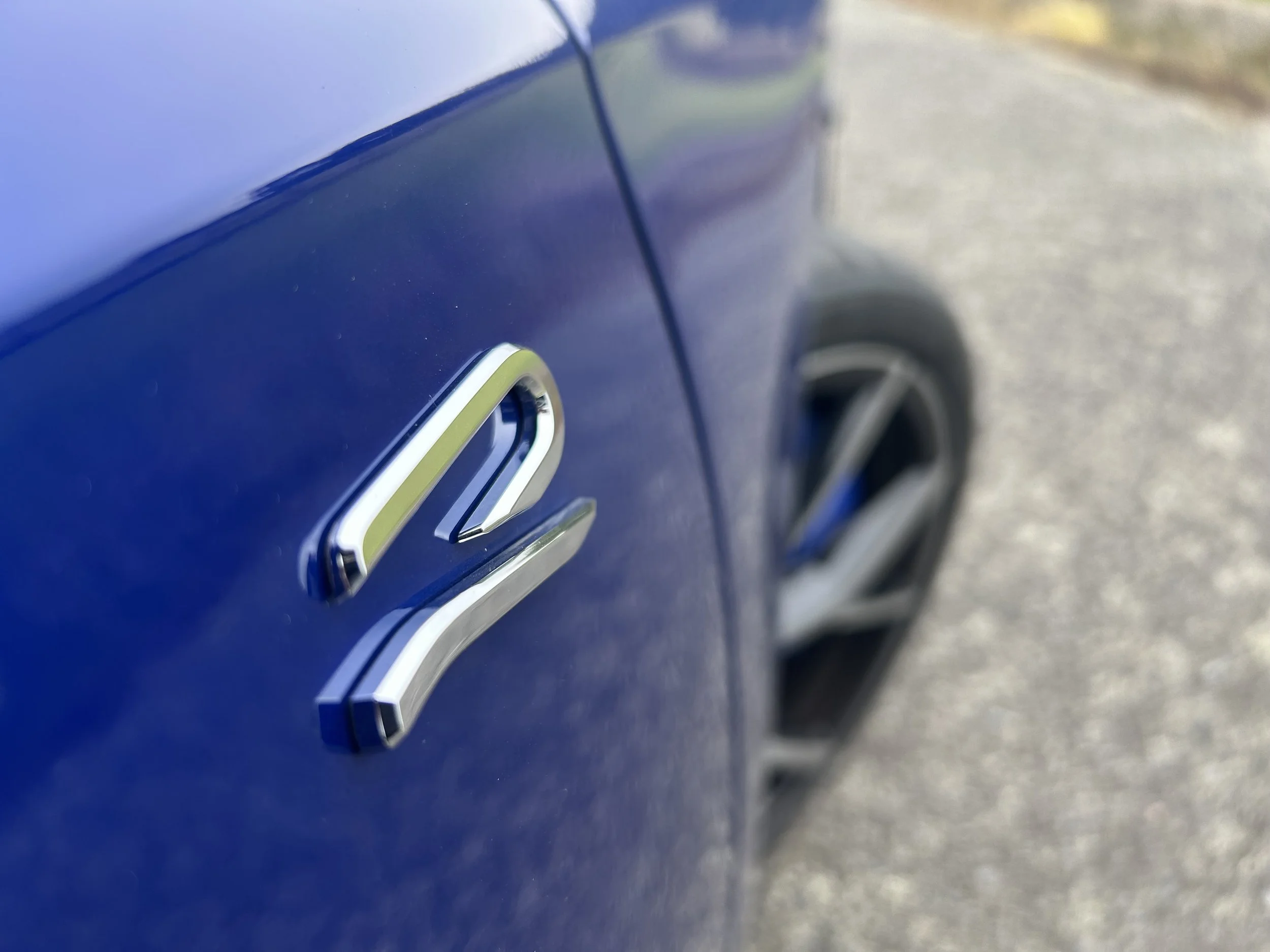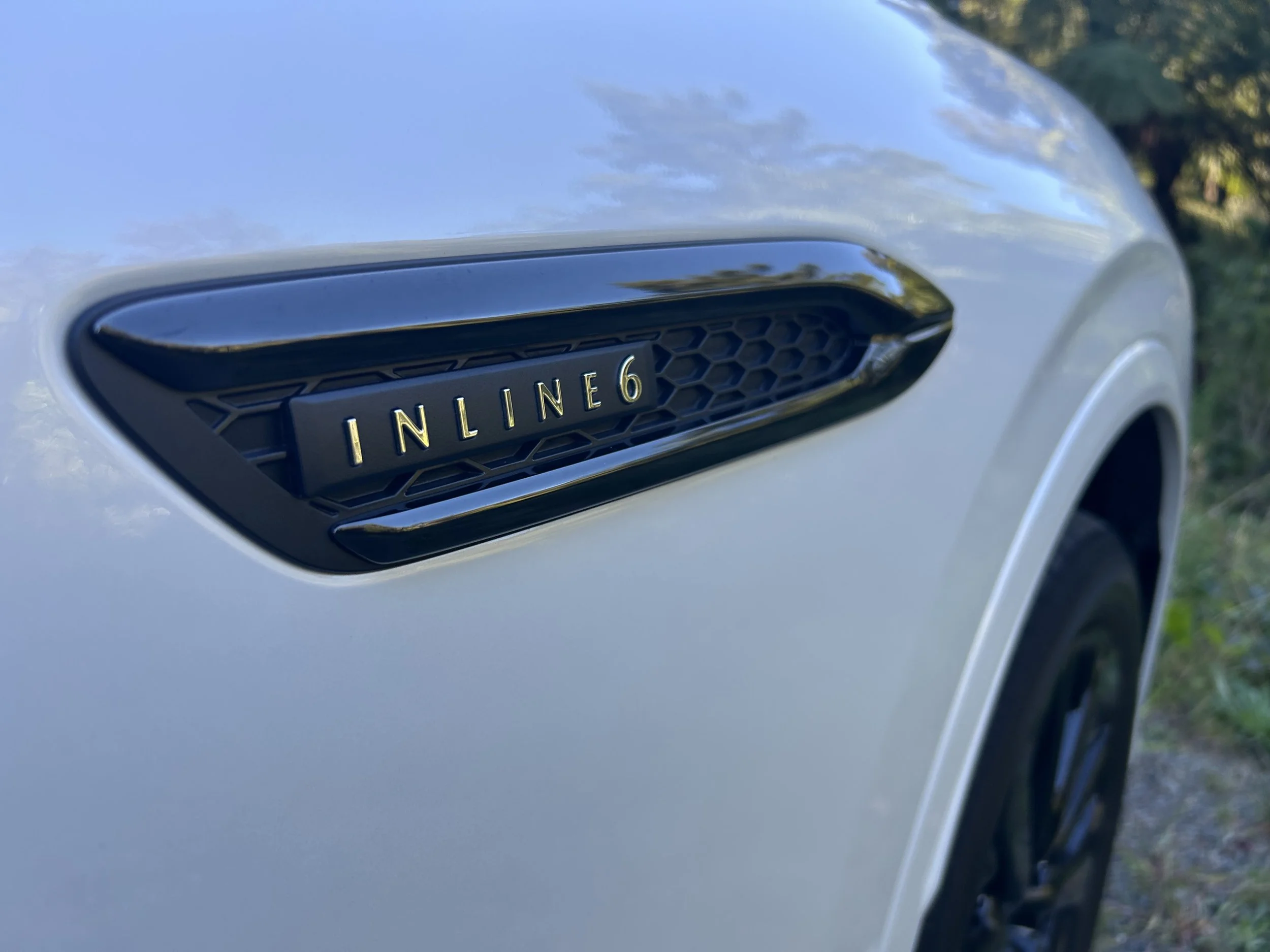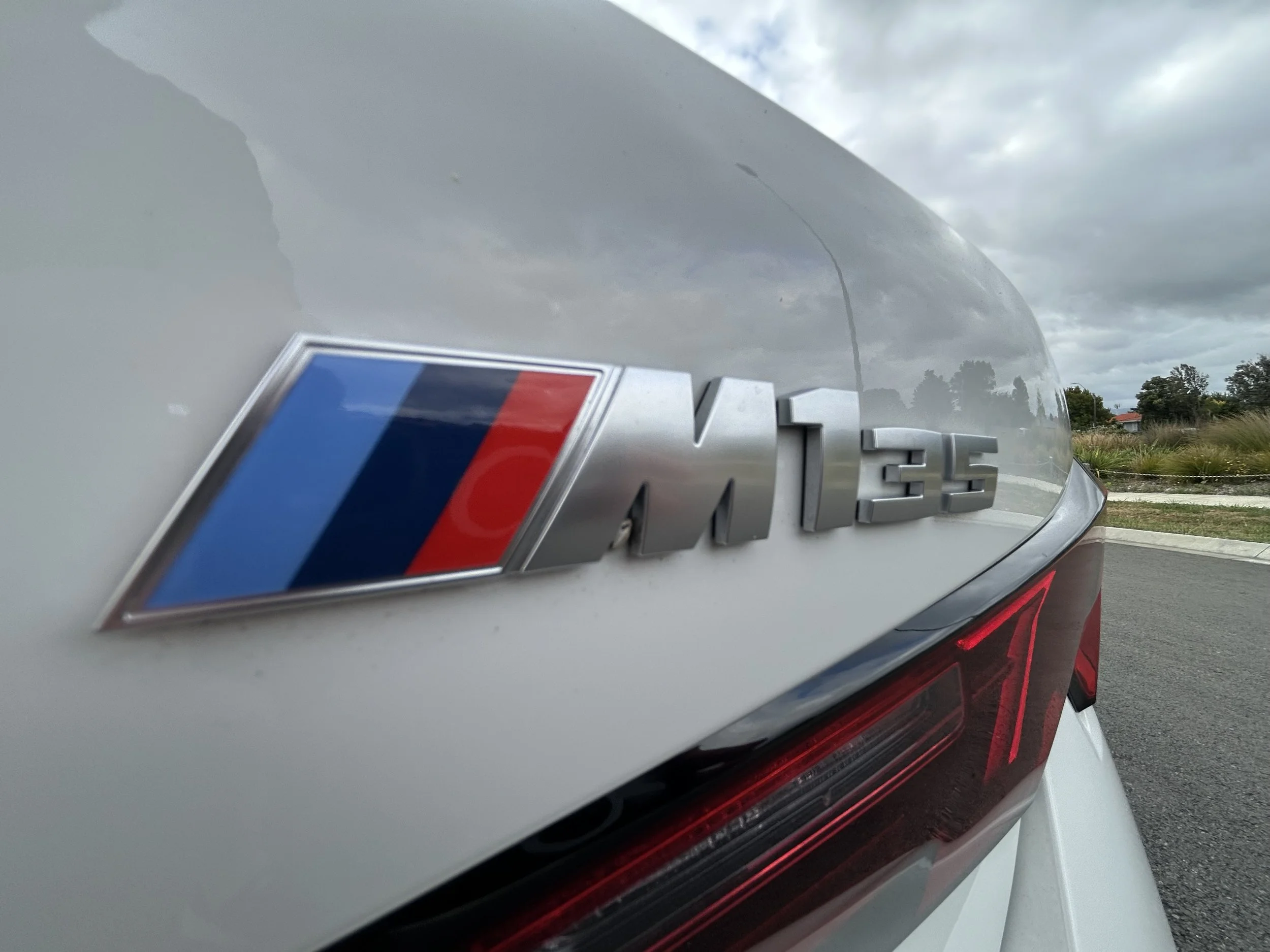Leapmotor C10 road test review: Welcome to byte club
/Aiming less at old-school nuts than new-age nerds, this car is in some ways less a driving machine than an operating system-cum-living space. It intrigues.
How much: $54,990.
Powertrain: 160kW/320Nm single motor rear drive with 69.9kWh LFP battery.
Dimensions: 4739mm long, 1680mm tall, 1900mm wide, 2825mm wheelbase.
For: Really roomy, extremely well specified for this spend, outshines previous top-choice China-made products in the bracket.
Against: You’re not in it for the driving; sense a little more development would make it a better car.
PROPOSITION from Leapmotor that it’s a ‘technology-driven' electric vehicle specialist becomes clear on spending time with its sole offer here.
Why the C10 medium five-seater sports utility from this latest startup car maker from China comes across as a fairly interesting car isn’t much to do with the driving, the styling or even how it packages - but how it operates.
The microprocessors and chips that power modern vehicles are now so prevalent they're practically a commodity. Computers are used in everything; they’ve made cars quicker, safer, cleaner, more efficient, and more reliable. Better.
But now comes the next step. Car companies are turning into tech companies. And no prizes for guessing which country is leading the way. Having already won the race to electrify vehicles, China’s car makers are now setting the pace on implementing latest technology into consumer-facing products. Those anyone can afford.
A1 integrations and services. They’re here. Autonomy? Lidar avails in China; as do generative chatbots for route planning.
In NZ spec this car is fully connected, with 4G Wifi lending capacity not just to run Spotify seamlessly but also accept regular over the air updates as it learns what customers want.
Is China Inc taking as well as giving? Potential for data acquisition is highlighted in a fleeting display at start up.
Another rare provision, still, is a vehicle-to-load (V2L) function for powering external devices. Self-parking is provisioned, remote parking is on the to-do list. All this on a sub-$60k car.
Many modern cars have given themselves over to the trend for touchscreen supremacy, but here dedication to purging buttons and switches is particularly strong. Even more pronounced than in the paragon of expulsion that it seeks to emulate and outsell, the Tesla Model Y.
While it has oneupmanship over that cited rival by at least provisioning sometime Musk doesn’t consider necessary, a digital instrument display ahead of the driver, assuredly that feature is very much secondary to a massive central screen.
A provision that Tesla’s architects so belove is, as in the Tesla top seller. Dedicated to delivering an intuitive smartphone-esque interface as a conduit for almost every action you will need to undertake, excluding absolute fundamentals.
How appealing this will seem might well depend on what you’ve come from, and what you already know.
For new drivers, whose whole life experience has been with computers and gaming consoles, this kind of presentation probably seems a highly logical pathway. Eminently more comprehensible than the dials, knobs and switches old-schoolers have grown up with.
On the other hand, the average new buyer age is still over 50, so likely as not the majority of those might be wary. Surely pawing and swiping at a touchscreen is more distracting than, say, pushing a simple button?
For me, there were mixed feelings. On the one hand, the screen’s 14.6 inch size impressed, as did the sharpness of its resolution and its responsiveness - clearly a very powerful processor is working away behind the dash.
On the other? Larger fonts wouldn’t go amiss and it seemed a fiddly interface. A less confusing menu structure would do it good.
I didn’t mind all that much that seat heating, ventilation and audio all being touch-prompted. There’s logic to the first and second, in that both access via bespoke icons at the screen base that are small but easily identified.
Burying vital controls like lights and mirror adjustment in sub-menus? That irked on grounds there will be times when you might like to access them with a greater immediacy than the car allows.
Restricting adjustment modes for the powertrain, steering weight - three settings in both instances - and the four levels of regenerative braking are all not just screen-bound, but also via sub-menus. That didn’t appeal at all to me. Nor, or that matter, to the car.
I’m beginning to think all of China’s domestic brands buy their driver monitoring from a common supplier. Every product seems to have the same issues of overly swift censure from the driver-facing camera that constantly seeks sign of any sign of inattention. And I mean any.
Simply a yawn will risk reprimand. The first level of censure is a trilling electronic warning. The ultimate telling off is that, plus messages in unfortunate English. I must admit to purposely riling the car to Nth degree when others were aboard so they could get a good laugh from “the driver status is abnormal … remove your hat and other accessories.”
LeapMotor will say, why not try the ‘intelligent voice assistant’ instead? Well, yes, you can, but don’t expect seamlessness from it, either. For me, the AI’s capacity to understand New Zild seemed … limited. Obviously I must work on my vowel sounds.
Before encountering all that, you need work out how to access and activate the car. For this you have a credit card key, which by touching a sensor in the door mirror authorises lock/unlock and allows drive once you momentarily lay it on the phone recharging pad.
Key cards make me nervous. Just today I unearthed from my wallet one to a hotel room in Las Vegas. As there was just a single card for this car I took extreme care. Yet twice I went to to drive it only to discover I couldn’t because the card was in a pocket of clothing worn the day prior and now sitting in the washing basket.
In actual ownership, you’d keep the plastic for emergencies and foremost utilise a phone app that also pre-sets the air con and infotainment and so on. It’s a better idea because the car only has a single external card reader, on the driver’s side door-mirror housing.
Knowing how susceptible these are to wanton damage, you might think as I did that it be more sensibly located on the door itself. Having one on the front passenger door an the boot would also be useful.
Propensity for the test car to promptly relock after what seemed but a few seconds’ grace made life interesting. When loading groceries into the boot, I had to set them down behind the car, tap the mirror, await to hear the doors unlock (this didn’t always happen first go) then hasten back to activate the boot release (also a tiny button) before it shut itself up again. Once, the car relocked while the boot was still open. After that, the alarm went off.
You probably want to spend time learning about all these nuances, but studying the handbook outside of the car is impossible, as it only delivers in electronic form, on the screen. While this car came with a cheat sheet to basic operability, which was invaluable, there were unresolved mysteries.
One was with the adaptive cruise control. Activation is a double tap on the Drive wand (just like a Tesla). But how to completely disengage it? No idea, sorry.
Thumbing the right side steering wheel roller controls audio volume. Doing the same with the left does….? Nothing at all, from my experience.
More unanswered questions are: What’s with the ‘back to front’ operation of the power window switches? And why can can you alter the brake regen feel between low, standard and high when on the move, but have to park up to initialise one-pedal mode? Also, can the induction pad be retuned so it doesn’t try to cook a phone?
A model line-up based around a single, generously equipped trim level simplifies the buying process. The specification includes a powerful 12-speaker stereo, power-adjustable front seats, 20-inch wheels, a panoramic roof, power tailgate, heated steering wheel, pleather upholstery and 360-degree camera.
All you need do is pick a colour. A word to the wise: White raises high potential of hearing lame fridge jokes.
Buying now means you miss out on Apple CarPlay and Android Auto, to be rectified next year, though cars here now cannot be retro-fitted.
The cabin proper is comfortable and uses pretty decent materials, with fewer hard plastics than some. There’s a touch of multi-coloured ambient lighting to raise the mood and, overall, the fit and finish is very tidy.
The seats are better in look than feel - they’re let down by soft foam in the backrest - but get ventilation and heating as standard. The front passenger side one can be folded down flat into a bed. Of sorts. The configuration suggests an uncomfortable slumber.
It competes on cabin space, with decent room for those in the rear as well as the two up front, even if they’re all tall. A flat floor in the back helps make all three seats viable.
There is space for luggage, too, even if the official boot capacity isn’t all that impressive at 370 litres, expandable to 825L with the rear seats folded down.
The area underneath the boot floor has two storage bays, one filled with two charging cables, one for home the other for on the run attached to a type 2 input, and an inflator kit (as there’s no spare). the other is there for your odds and ends. There’s no frunk up front, even though there appears to be enough room, as drivetrain elements are set very low.
The C10’s powertrain is straightforward; rear-wheel drive with a 160kW/320Nm motor feeding off a 69.9kWh battery, with claimed range of 420km an top speed slightly above 160kmh.
The brand reckons the ‘cell-to-chassis’ design approach not only leaves more space for occupants - they could be right - but also improves the battery layout but also, because the battery is structurally integrated, increases torsional rigidity, which consequently benefits ride and handling. More in theory than reality, I’d say, but still ….
The outputs are good enough for brisk acceleration, but it isn’t especially rapid. Leapmotor itself says it has put efficiency above alacrity; this shows in how the car gets along. It’s not going to hold up the fast lane, but unless you have reason to be out there, best just to let it roll along.
While the optimal range was assessed on the NZ-trusted WLTP test, I can’t say it’s likely to result in real-life activity; but you should have no problem managing 350km. Which still means it’s fairly competitive.
Shame I cannot say the same about the charging side of things. The 6.6kW AC charging capacity is adequate for home charging - they suggest 30-80 percent will take about six hours - however for on-the-run replenishment, the 84kW maximum DC charging rate is decidedly second-tier. IY might potentially be more affected by cold weather. Still, it being an LFP battery bodies well for lifetime longevity.
So, of all the 14 Stellantis brands, which would you think might be best credentialed to help sort a family car of this ilk? Maybe Dodge, maybe Peugeot/Citroen, maybe Fiat? All have skin in the SUV game, having created plenty of their own.
Actually, none of those. Believe it or not, Maserati was thrown the keys to this job. With the end result being …?
Well, if you didn’t know, you wouldn’t guess, frankly. Though the C10 drives competently, and feedback from those in the know is that the tuning that the export cars receives - as result of a lot of laps of Mazza’s Balocco test facility in Northern Italy - is better than China’s domestic tune, there’s nothing standout occurring to reinforce any particular Modena magic having rubbed off.
You need only hit a couple of corners to get firm sense the suspension is geared more towards comfort than carving the corners. Indeed, if you try Sport mode … well, you’ll do it once, and perhaps be inclined to think more carefully before you did so again. Driving heartily on damp roads during test led to puckering moments of traction loss.
To be fair, will the primary buyer type care? And if any consideration is truly given to this aspect, it’ll only be in comparison with other electrics of similar pricing. which, by and large, are just as unexceptional. Including you Tesla, and you, BYD. Primary functionality, surely, is transporting your family around smoothly and quietly. The C10 does that with no qualms.
And comfortably, too? Erm. To a point. The suspension stand additional refinement. Imperfect seal and potholes will have you jiggling you around in your seat. Overall, a colleague was right on the button in reflecting “like many of these new-brand Chinese EVs, its dynamic recipe is pretty much just plain rice and ketchup.”
It’s more than just the suspension. You can mess about with the powertrain’s responsiveness, the steering and brake feel and … well, it makes little difference, all in all. Which is perhaps why the control interfaces are screen-bound and, thus, not easily adjusted when driving. Maybe they know it’s pointless, so just don’t want to make it too easy given you’re pushing north if two tonnes before adding additional load weight.
Cruising, then, is its happy place. As in a lot of EVs, the drivetrain noise is almost inconsequential, and wind noise is well suppressed too. Tyre roar is more of a thing. But, all in all, you can overcome all that by simply turning up the stereo and enjoying some good tunes via Spotify.
Or, at least, you could if not for the electronic driver assists. Leapmotor’s yet another Chinese brand to determine its interventions from the lane-keeping, speed limit alerts and driver distraction monitoring and so on are erratic, over-zealous and and overly loud. You can disable some of the bonging, but the moment the car switches off, everything reinstates to max irksomeness.
Passive safety consists of front, side, and curtain airbags. It’s achieved five stars in ANCAP.
The NZ market model carries a four-year, 100,000km warranty on the vehicle and an eight-year, 160,000km battery cover. Australia has a seven year unlimited kilometres warranty and the same battery warranty us. Just saying.
Relatively modest appeal to enthusiast drivers and weird DMS and ADAS interactions, being wholly electric … those factors alone will likely curtail the C10 being universally acceptable, or perhaps given any particular consideration at all by those who enjoy driving for the sake of it.
However, if you were undergoing an exercise that simply required a car out of China that had to be fully battery committed, was loaded with gizmos and geegaws, stood to be highly functional and had decent chance to offer good range, reasonable performance and solid build quality, fit and finish for a solid price?
Well, two years ago, odds on you’d have selected a BYD Atto 3. And the year prior to that, the Tesla Model 3.
But as 2024 draws to a close, I’d vouch the C10 comprehensively betters both of those. A capacious and overall comfy cabin, surprisingly high-quality ingredients and impressive spec list make up for much of what it lacks in character and charisma.
China has 150 car brands and, out them, Leapmotor is by no means the biggest player. On a chart of the top 50 car brands rated by their market capitalisation, it’s outside China’s top 10, which is headed by BYD, which sites third (behind Tesla then Toyota).
Still, with a value of $US4.6 billion, it’s more valuable than Mitsubishi Motors ($US4.1b), Mazda ($US3.9b) and Aston Martin ($US1.2b).



























